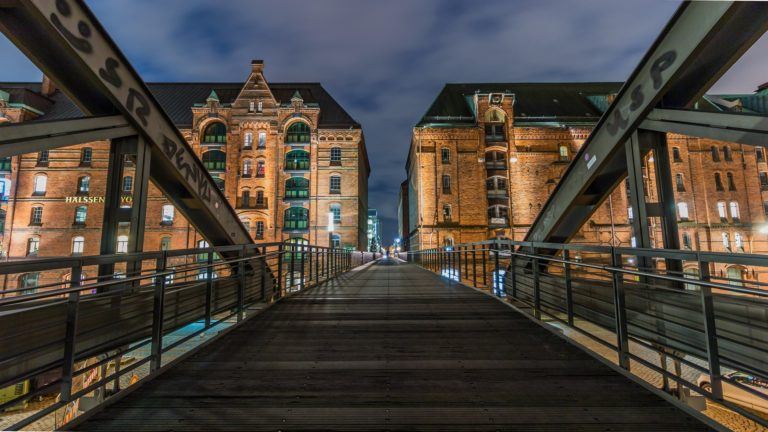A smart city is currently a trendy term, fortunately followed by real changes. It seems lucid that urban areas tend to become more adjusted to people’s needs and that the latest solutions can improve the quality of life. What is so “smart” about it then?
What does really a “Smart City” mean — definition and explanation
We find it hard to consider an adjective “smart” to be vastly descriptive in this case. It is not just about being intelligent, purely and simply. The most complete interpretation of this phrase was presented by the Comitee of Digital and Knowledge-based Cities:
Smart City is a city that uses information and communications technology to make its critical infrastructure, its components and public services more interactive and efficient, making citizens more aware of them.

Substantially, due to technology and easily accesible knowledge, urban areas ought to become more friendly to its residents and translate into higher standard of living. Among elements that might help us to achieve these goals, we can mention well-developed municipal public transport, taking care of formalities in a troublefree and fast way, common access to the information about city development plans or active participation of dwellers in building the future of the city. To all intents and purposes, we can link many ingredients with a Smart City, even those that you would not expect. Paradoxically, behind this new term there are also older methods, which goal was to improve the quality of life; anyways, these days we have much more advanced solutions to make use of.
Smart City — examples from the everyday life
It seems right to get to know the theory first in order to understand the practical side. In case of Smart City, we already witness the implementing of new complex systems. The most apparent example is the street lighting system. Nowadays, it not only needs to provide sufficient brightness, but also have low energy consumption and allow us to optimize its work so that the street lights do not gleam when not necessary. By using different detectors that take measurements at all times, these goals are to be achieved. Considering numerous benefits, it does not seem odd that many cities decided to follow this route.
Another interesting example is estimating the amount of waste produced by the city residents. In Chicago, sensors in street trashcans were mounted and over time it turned out as a great analytical tool that made it possible to estimate the volume of rubbish. Thanks to that, the municipality managed to optimize the circuits of city service vehicles that gather litter. Simultaneously, the rats population was decresead by 20%. Seul’s municipality also decided to bring this useful mechanism into play thus the city started to save more money and became a more hospitable place.

While talking about the Smart City idea, we can not forget about the public transport. This topic remained a subject of many heated discussions and nothing indicates that it might change. In any case, in this field may we notice a very vibrant development and usage of artifical intelligence algorythms or even quantum computers. When talking about the second instance, it is more about the showcase of its potential than real use.
Moreover, it seems crucial to acknowledge the traffic moevement analysis systems. By measuring the traffic volume and checking the number of passengers, we are able to optimize routes and design roads that have absolutely nothing to do with traffic jams. Ultimately, it will allow us to cover every distance faster and create the whole infrastructure based on the real needments. At that point, self-driving cars are going to loom large. It is worth noticing that they will be communicating with the city Internet of Things, providing data about the optimal route in particular moment.
Moving on, the next associated topic is the parking systems. In this case, different companies approach this matter in different ways, basing their work on sensors or computer vision. Both options seem undoubtedly noteworthy and full of potential. We find it particularly major that it is viable to reduce the time needed to find a parking spot. It is going to be the crucial element of the puzzle once the road becomes dominated by autonomous cars.
Finally, we can add services of sharing economy on to elements of Smart City. “Sharing economy” is all about connecting people via the Internet platforms, allowing them to provide services or share use of resources, assets or skills without passing on the rights of ownership. Furthermore, it is worth to note the concept of “prosument”. It is both consument and producer at once. Among the examples, we can name electric scooters to loan, cars, bikes and shared rides. Both the planet and users gain profits.
The future of Smart City
Many years marked by further popularization of modern solutions are going to pass in order to let the cities be real Smart Cities. In my opinion, it is significant to draw the residents into the whole process. All the solutions are made for the citizens and they should have an impact on how those solutions look like. Currently, just the municipality cares about it by the proper education.

Ultimately, artificial intelligence plays a great part in the process. Having everything in mind — the progress in the field of machine learning and artifical intelligence in the recent years, devices’ downsizing, what is mostly seen in the Internet of Things, or more effective data analysis, it shapes up well that the IT market will deliver us proper, mature and firm solutions.
It seems interesting, how fast are the urban areas going to undergo the process of Smart City and how will this term be understood in the next 10, 20 or 30 years.